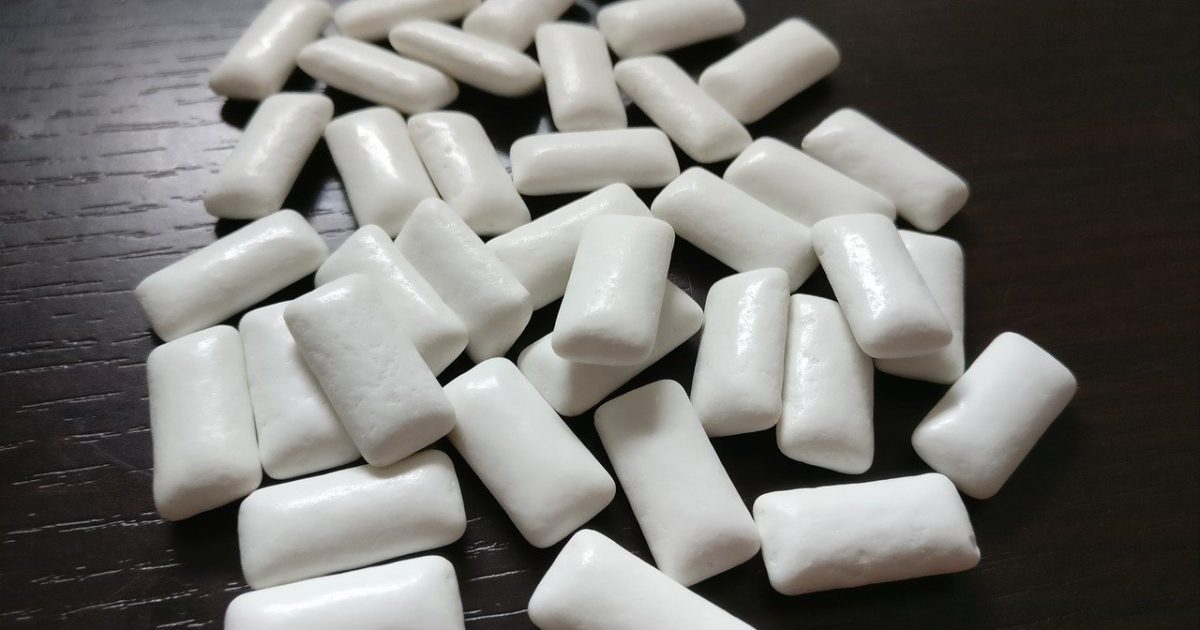A recent study from University of Pennsylvania scientists may add another tool to the utility belt of COVID-19 treatments.
And this latest innovation doubles as a breath freshener and COVID-19 viral load suppresser.
ICYMI 🚨 Scientists developing chewing gum that could reduce coronavirus transmission https://t.co/YnUrOy7YeX
— Insider Paper (@TheInsiderPaper) December 5, 2021
New experimental chewing gum has been developed that can reduce the transmission of #coronavirus. https://t.co/hVz3hUKWze
— Mint (@livemint) December 5, 2021
This experimental chewing gum may slow down coronavirus transmission, says study https://t.co/lX4ZLAqDFU
— Gadgets 360 (@Gadgets360) December 5, 2021
University of Pennsylvania scientists used saliva samples of COVID-19 patients to test a chewing gum laced with a plant-grown protein.
The protein traps the SARS-CoV-2 virus to reduce viral load in saliva and potentially hamper transmission.
According to the team of researchers, the chewing gum contains the ACE2 protein to neutralize the virus.
EurekAlert! noted:
The work, led by Henry Daniell at Penn’s School of Dental Medicine and performed in collaboration with scientists at the Perelman School of Medicine and School of Veterinary Medicine, as well as at The Wistar Institute and Fraunhofer USA, could lead to a low-cost tool in the arsenal against the COVID-19 pandemic. Their study was published in the journal Molecular Therapy.
“SARS-CoV-2 replicates in the salivary glands, and we know that when someone who is infected sneezes, coughs, or speaks some of that virus can be expelled and reach others,” says Daniell. “This gum offers an opportunity to neutralize the virus in the saliva, giving us a simple way to possibly cut down on a source of disease transmission.”
Since the experimental COVID-19 injections don’t prevent transmission, Daniell’s work provides an innovative solution to potentially reduce viral load.
Recent research indicates vaccinated and unvaccinated individuals can carry similar viral loads.
EurekAlert! explained how the scientists tested the chewing gum:
To test the chewing gum, the team grew ACE2 in plants, paired with another compound that enables the protein to cross mucosal barriers and facilitates binding, and incorporated the resulting plant material into cinnamon-flavored gum tablets. Incubating samples obtained from nasopharyngeal swabs from COVID-positive patients with the gum, they showed that the ACE2 present could neutralize SARS-CoV-2 viruses.
Those initial investigations were followed by others at The Wistar Institute and Penn Vet, in which viruses, less-pathogenic than SARS-CoV-2, were modified to express the SARS-CoV-2 spike protein. The scientists observed that the gum largely prevented the viruses or viral particles from entering cells, either by blocking the ACE2 receptor on the cells or by binding directly to the spike protein.
Finally, the team exposed saliva samples from COVID-19 patients to the ACE2 gum and found that levels of viral RNA fell so dramatically to be almost undetectable.
After the positive findings, the researchers have sought permission to conduct a clinical trial with COVID-19 positive patients.
The research remains in the beginning stages, but clinical trials proving the gum is safe and effective can potentially be a game-changer to prevent transmission.
The peer-reviewed study was published in the journal Molecular Therapy.
Below is the Abstract from “Debulking SARS-CoV-2 in saliva using angiotensin converting enzyme 2 in chewing gum to decrease oral virus transmission and infection”
To advance a novel concept of debulking virus in the oral cavity, the primary site of viral replication, virus-trapping proteins CTB-ACE2 were expressed in chloroplasts and clinical-grade plant material was developed to meet FDA requirements. Chewing gum (2 g) containing plant cells expressed CTB-ACE2 up to 17.2 mg ACE2/g dry weight (11.7% leaf protein), have physical characteristics and taste/flavor like conventional gums, and no protein was lost during gum compression. CTB-ACE2 gum efficiently (>95%) inhibited entry of lentivirus spike or VSV-spike pseudovirus into Vero/CHO cells when quantified by luciferase or red fluorescence. Incubation of CTB-ACE2 microparticles reduced SARS-CoV-2 virus count in COVID-19 swab/saliva samples by >95% when evaluated by microbubbles (femtomolar concentration) or qPCR, demonstrating both virus trapping and blocking of cellular entry. COVID-19 saliva samples showed low or undetectable ACE2 activity when compared with healthy individuals (2,582 versus 50,126 ΔRFU; 27 versus 225 enzyme units), confirming greater susceptibility of infected patients for viral entry. CTB-ACE2 activity was completely inhibited by pre-incubation with SARS-CoV-2 receptor-binding domain, offering an explanation for reduced saliva ACE2 activity among COVID-19 patients. Chewing gum with virus-trapping proteins offers a general affordable strategy to protect patients from most oral virus re-infections through debulking or minimizing transmission to others.
And from the Discussion:
The oral cavity is an important portal of entry for SARS-CoV-2 virus and plays a particularly significant role in the transmission of infection or continued re-infection. The heterogeneity of the oral mucosa at a cellular level and presence of several ubiquitous receptors including ACE2 and GM1 facilitate entry of oral pathogens. Saliva plays a vital role in transmission of infection among critically ill patients and can also compromise oral tissues. Reducing the viral load in saliva should limit the risk of transmission from a potential carrier and may help reduce the severity of COVID-19 disease by minimizing re-infection because salivary glands constitute the primary site of SARS-CoV-2 replication. Therefore, we explore the ability of CTB-ACE2 chewing gum to trap SARS-CoV-2 to debulk virus from saliva in pre-clinical studies that provide a foundation of clinical testing designed to reduce oral viral load and transmission.



Join the conversation!
Please share your thoughts about this article below. We value your opinions, and would love to see you add to the discussion!